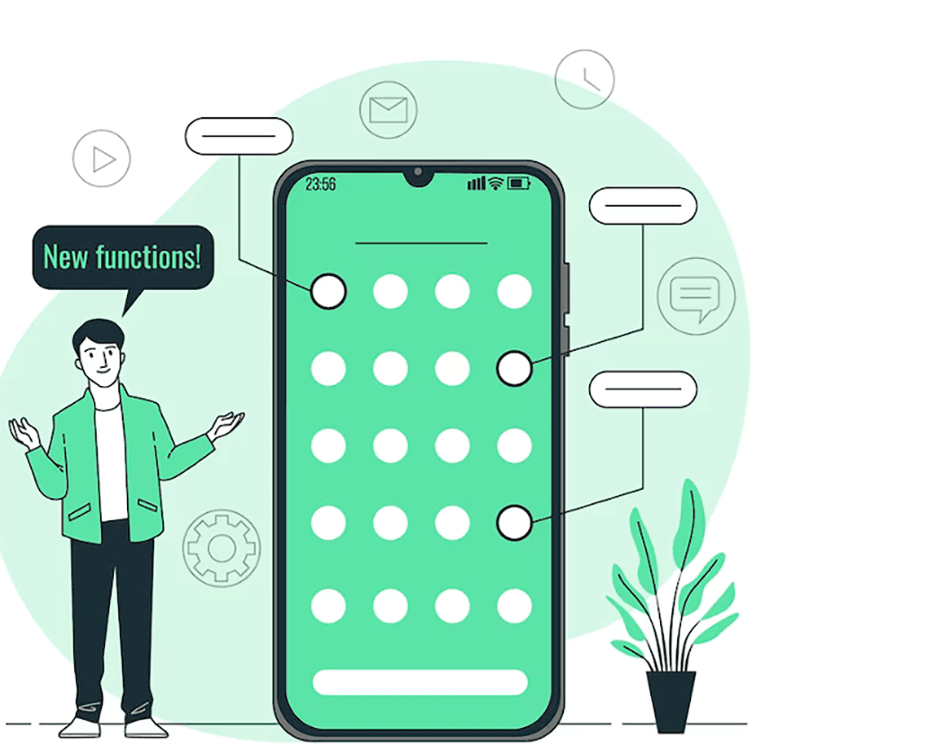Cell phones have become an integral part of our lives in our increasingly connected world. We rely on them to stay in touch with family and friends, stay informed of the latest news, and even for entertainment. It has become so important that switching cell phone providers can often feel challenging. Not only do you have to find the right provider that fits your needs and budget, but you also have to worry about the hassle of changing your phone number.
The good news is that you don’t have to lose your current phone number when switching providers. A process known as a “port” allows you to keep your current number when you switch providers. This process is simple and can be done in a few steps.
In this blog post, we will explore how to switch to a new cell phone provider and keep your number. We will discuss the steps you should take to ensure you don’t lose your number, why it’s important to keep it, and the potential costs and consequences of switching providers.
1. Review Your Billing Statements
By reviewing your previous three to six months of billing statements, you can better understand your cell phone usage. Knowing how much data, talk time, and text messaging you use each month is important. You might be paying for an unlimited data plan, but only using 2GB of monthly data. If so, choose a cheaper cell phone plan that better fits your usage.
Analyzing your cell phone bill can also help you identify unnecessary charges, such as overage fees or subscription services you no longer use. These charges can add up quickly, and you can save money on your monthly bill by eliminating them.
Once you’ve reviewed your billing statements and determined what type of phone plan you need, it’s time to consider switching to a new cell phone provider. Many assume that switching providers means changing their phone numbers, but that’s not true. With number portability, you can keep your same phone number when you switch providers.
2. Compare the Best Cell Phone Plans and Deals
Are you looking for a way to save money without sacrificing coverage? If so, it’s time to compare the best market cell phone plans and deals. The first step in finding a better plan is to examine your current billing statement closely. How much are you paying for data, talk, and text? Are you using all the features included in your plan? Once you clearly understand your usage, you can start shopping for a less expensive plan.
One great option to consider is a mobile virtual network operator (MVNO). These companies partner with major providers to offer cheap phone plans. While they don’t own cell phone towers, they can still provide reliable coverage at a fraction of the cost. Additionally, when switching providers, you can take advantage of BNESIM’s eSIM technology, which offers seamless global connectivity.
Many portal lists of the best cell phone plans and deals include information on MVNOs. You can also search online for even better deals you may qualify for as a new customer.
If you’re happy with your current coverage, look for an MVNO that runs on your existing network. For example, switch to Visible if you’re a former Verizon Wireless customer. It uses Verizon’s towers to provide the same great coverage at a lower price.
3. Check Phone Compatibility or Buy a New Phone
Before making the switch, checking if your phone is compatible with the new carrier’s network is important. Most cell phone companies have compatibility checkers on their websites. Simply enter your device’s IMEI or MEID to determine if it will work on the new network.

One thing to keep in mind is that your phone needs to be unlocked if you plan to keep it when you switch. If it’s locked, you’ll need to check with your current provider for instructions on unlocking it. Once your phone is unlocked, you can use it on any carrier that supports your phone.
If you’re in the market for a new phone, buying from a third-party seller like eBay can save you money. However, ensure the phone you’re buying is unlocked and compatible with your new network.
4. Purchase Your New Plan
Once you’ve found a new cell phone plan that fits your needs and budget, it’s time to purchase it. One of the easiest ways to purchase a new plan is by buying a SIM card at major retailers like Walmart, Best Buy, Target, and CVS. You can also purchase eSIM or SIM cards online, but be sure to give yourself plenty of time for shipping so that the SIM card arrives before your current plan expires.
To start a prepaid plan, check out our guide for the best prepaid phone plans. Prepaid plans can be a great option for those who want to save money and have more flexibility. Before purchasing must ask for the experience of the respective company from friends and family or take the help of online portals such as Unifon erfaring.
5. Install Your New SIM Card
Once a new SIM arrives in the mail, follow the instructions to install the SIM card in your phone. If you need help with how to install the SIM card, your new provider should have detailed instructions on their website, or you can contact their customer service for assistance.
If you plan on transferring your old phone number to your new provider, review their number transfer policy. This information can typically be found in the FAQ section of their website. If you have any questions or concerns, don’t hesitate to contact their customer service for help.
6. After Porting, Confirm Cancellation of Your Old Service
Switching to a new cell phone provider while keeping your old number has become popular. The process is known as porting, and it’s a convenient way to switch carriers without losing your phone number. But, before you get too excited about your new plan, you must take one crucial step – confirm the cancellation of your old service.
Do NOT call the provider you’re leaving and cancel service before the port completes. If you do, the account will be closed, and you won’t be able to access your old number. This can cause a lot of inconvenience, especially if you’ve been using the same number for a while. To avoid issues, wait until the porting process is complete before canceling your old service.
The porting process may take only a few minutes, but sometimes it will take 24 hours to transfer your number. During this time, you may experience some service disruption. However, once your service is active, your new carrier will let you know, and you’ll be ready.
7. Get the Most Out of Your New Plan
Switching to a new cell phone provider can save you money and give you better coverage. But with so many options available, it can be overwhelming to choose the right one. Once you’ve made the switch, there are a few steps you can take to get the most out of your new plan.
First, check the FAQ pages on your new provider’s website or mobile app to adjust any settings that need to be changed on your phone. This process will vary depending on your phone type, but most providers will have step-by-step instructions to guide you through the process.
If you have any problems, don’t hesitate to contact customer support. Most MVNOs (mobile virtual network operators) offer customer support by phone and chat. However, some of the smaller carriers don’t have retail locations where you can go for help. If in-person customer support is important, look for a cheap cell phone provider with physical stores.
8. Review Your Phone Plan
With so many options and constantly changing deals, it’s hard to know if you’re getting the best deal for your needs. That’s why reviewing your phone plan regularly is important, ideally every 12 months, to ensure you’re still getting the best value for your money. Cell phone companies are constantly adjusting their pricing and data offerings to stay ahead of the game, with the wireless industry becoming increasingly competitive. This means you could miss out on a better deal if you last reviewed your phone plan a while ago.
When reviewing your phone plan, one option to consider is switching to a new cell phone provider. Many people hesitate to switch providers because they want to keep their phone numbers. However, it’s important to know that you can switch to a new provider and keep your number, thanks to number portability.
Reviewing your phone plan regularly ensures you get the best value for your money. Feel free to switch providers if you find a better deal elsewhere. And remember, you can keep your phone number when you switch. By considering your data needs, the cost of the plan, coverage area, and customer service, you’ll be well on your way to finding the perfect phone plan for your needs.
Switching to a new provider and keeping your number is simple and can be done in a few steps. If you have any questions about how to switch to a new phone provider or keep your number, please contact us. We are happy to help. Thanks for reading!


































